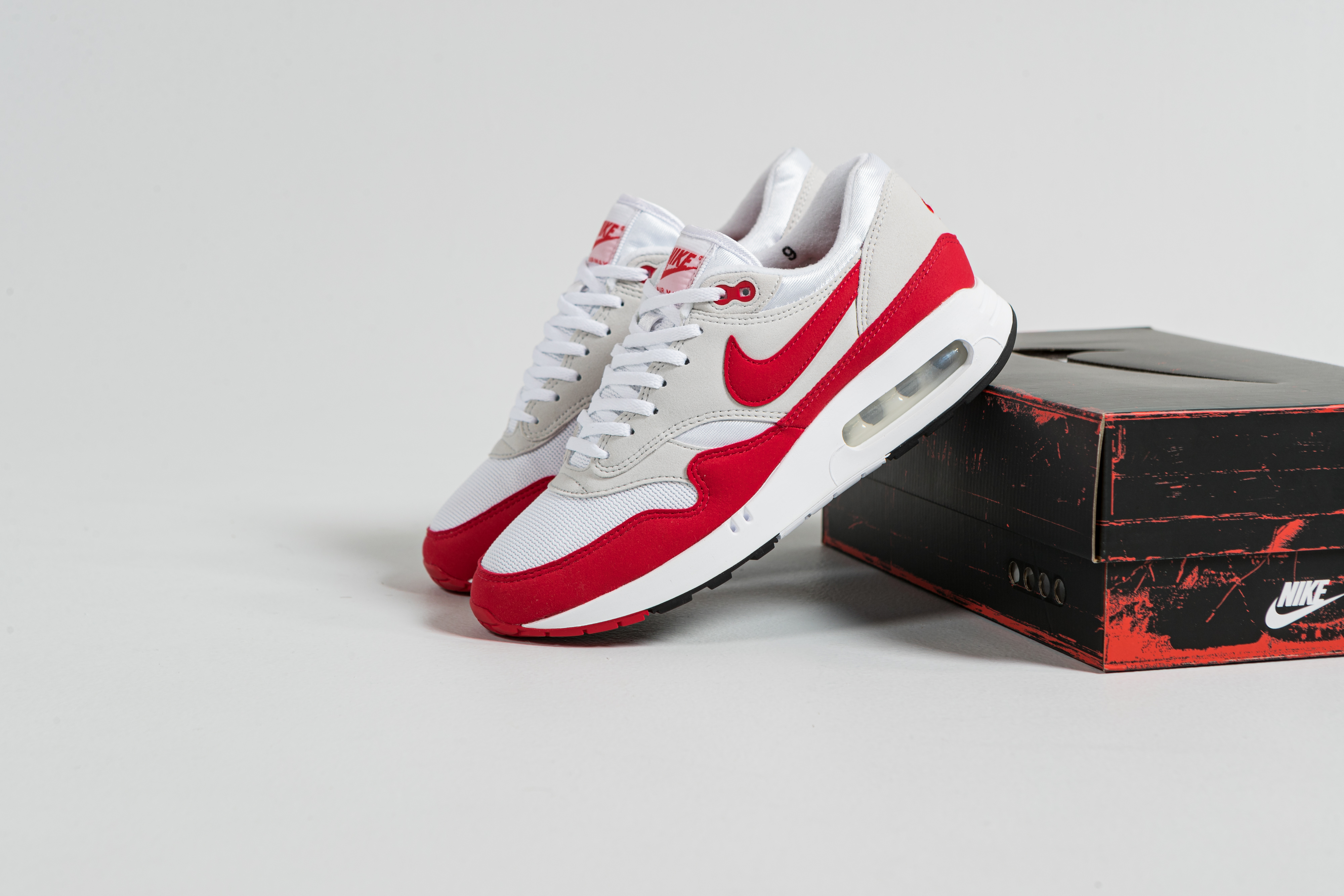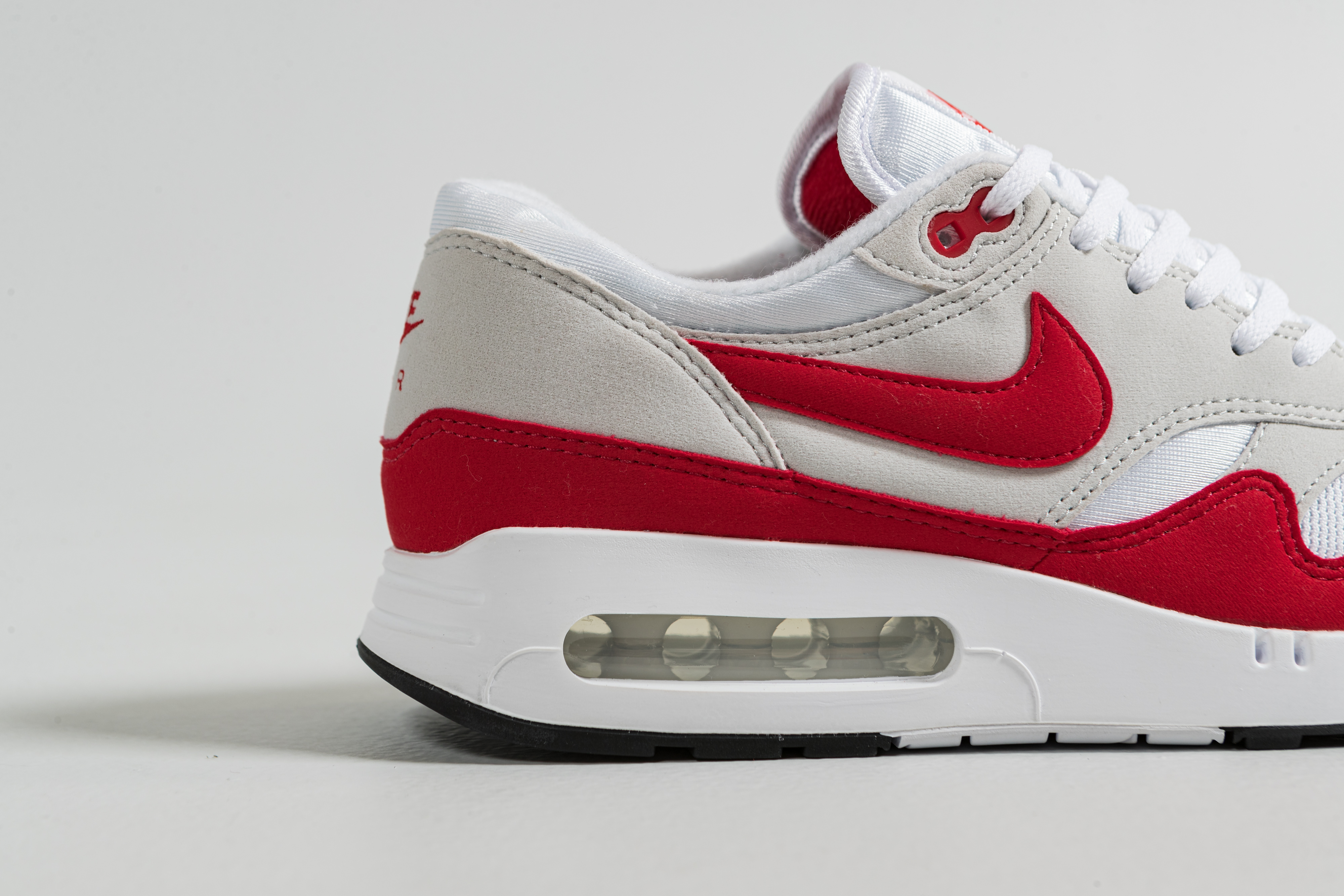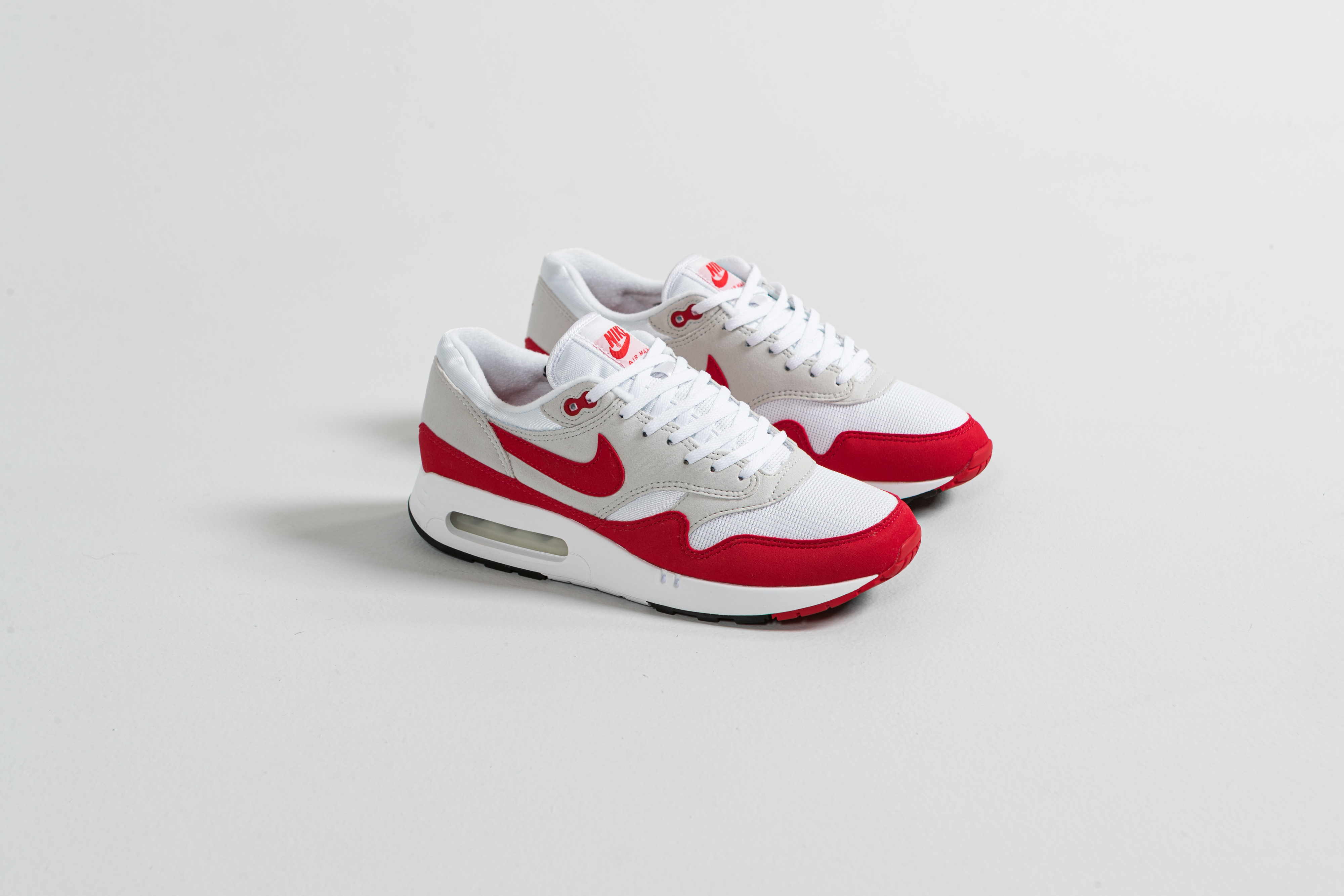



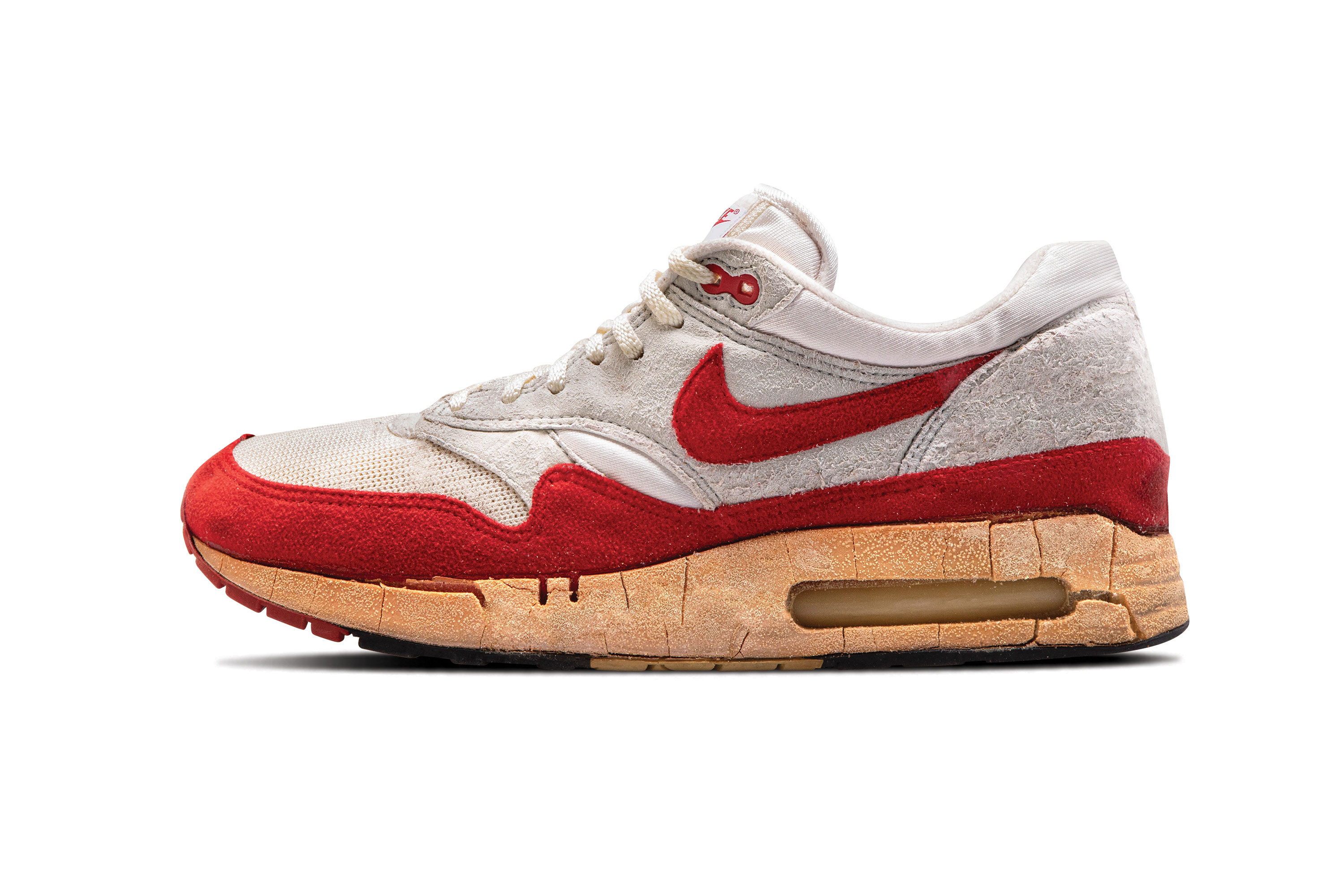

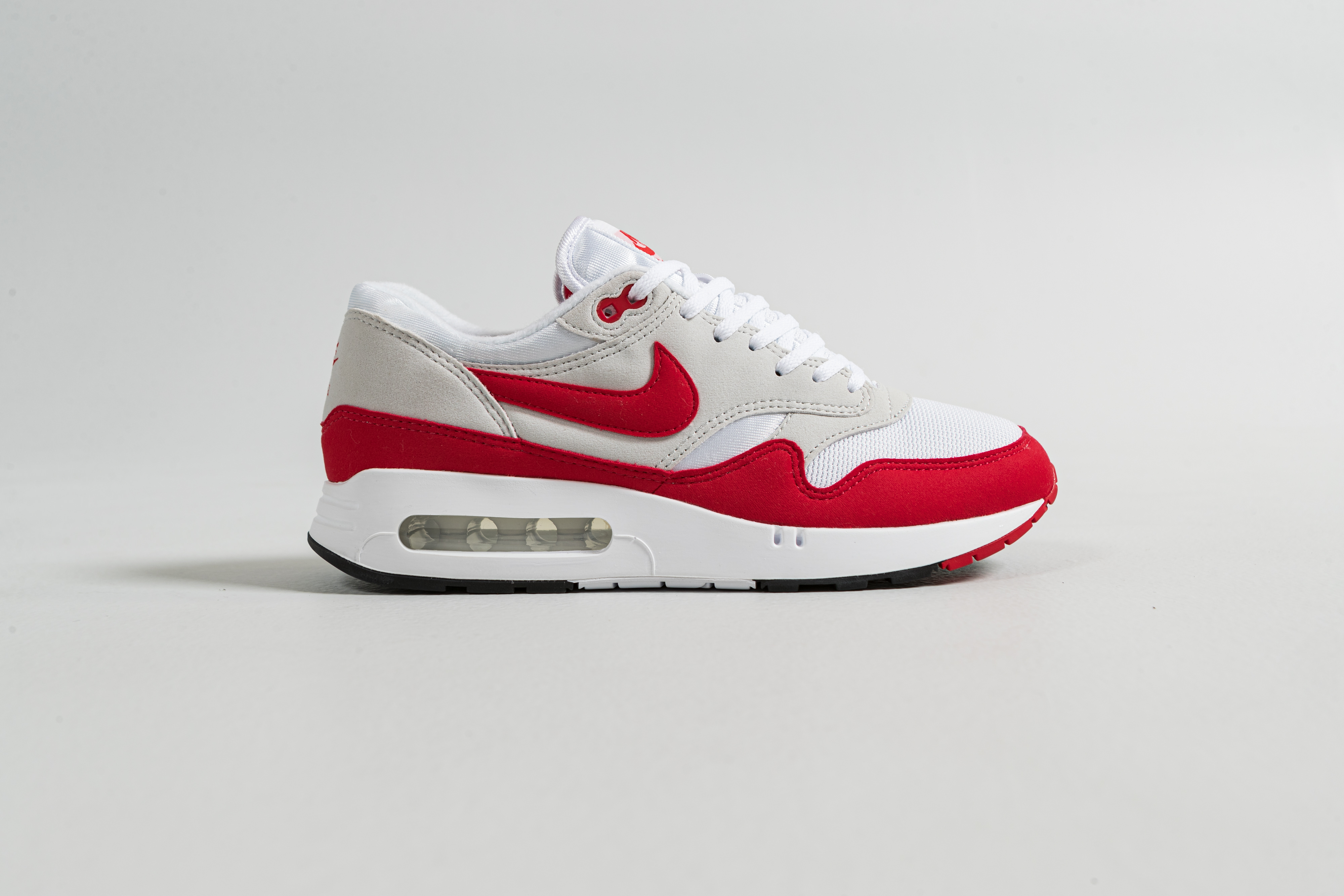

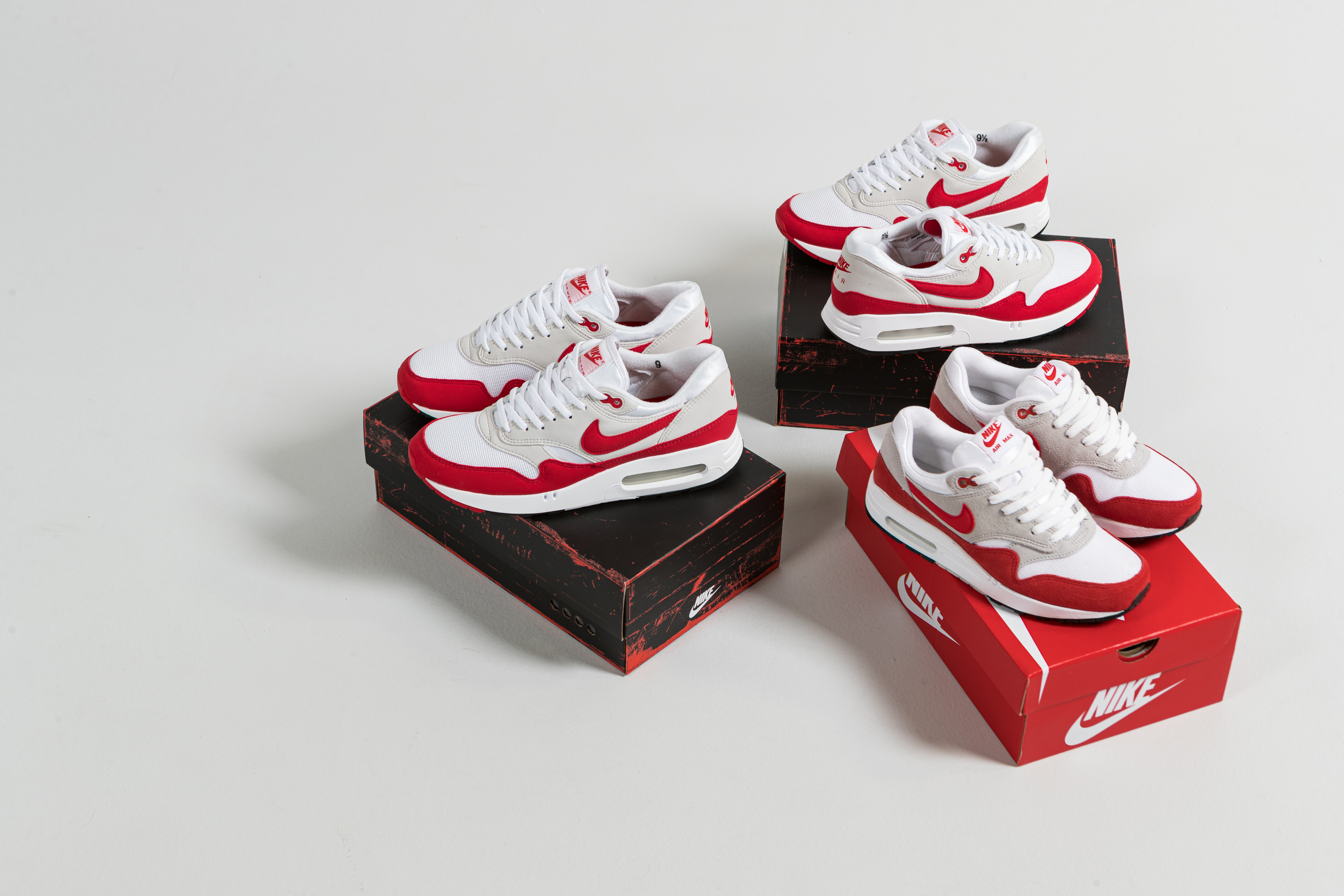
For Nike fans around the world, March 26th holds a special place in their calendars. This seemingly innocuous date has been claimed by Nike as Air Max Day. When researching the significance of this specific date, you might come across the explanation that March 26th, 1987 was the launch of the very first Air Max runner — known now as the "Air Max 1". That makes complete sense, mystery solved. There’s just one problem — Nike already had an Air Max on the market in late 1986... This year, Nike sets the record straight once-and-for-all, with a tell-all story and the return of a mythical shoe few people even knew existed.
As Frank Rudy — mastermind of Nike Air — continued to push the boundaries of how much Air could fit into a shoe, he was coming up against the same issue: with all that Air there wasn’t much midsole left! As length of the Air bag increased, it grew wider in order to keep the shoe stable. The midsole sidewalls were starting to get pretty thin — until this point, Nike Air bags had to be buried inside the midsole.
Fortunately the mind of Tinker Hatfield — Nike’s preeminent footwear designer — was three steps ahead of this engineering issue. Tinker had been toying with the idea of exposing the Air bag after visiting the Le Centres George Pompidou in France. This polarising building exposes the inner-workings rather than hiding them behind facades. This inside-out idea offended many, but for Hatfield it was a lightbulb moment. When Frank Rudy mentioned his engineering issues, Tinker’s response was simple — get rid of it all together! In a classic “here’s something I prepared earlier” moment, Hatfield had conceptualised a shoe with a cut-out at the heel, allowing the oversized bubble to push out to the edges of the footprint. The added bonus was that it also exposed the clear TPU bubble, revealing Air's inner-workings — just like the Centres Pompidou.
Unfortunately that first concept penned by Tinker had issues, mainly that the uppers were far too complex for the production methods of the time. It’s one-piece toe would be revisited a few years later on the Air Flow, but the panelling proved too much in 1986. With that in mind, Tinker went back to the drawing board and came back with a shoe that possessed a more conventional cut-and-sew upper. The midsole tooling remained almost identical to that first concept. And so, after development and sampling the shoe was put into production. Nike was ready to introduce the world to visible Air.
Nike knew runners were worried about the exposed Air bag's reliability. Much of the advertising centred around proving to people that the Air bag wouldn’t pop — it was often the first thing anyone would enquire about. For runners it was a big concern that might cause injury. Nike put plenty of time into documenting the Air Max sole in-motion, putting to print plenty of ad’s which showed images of the bubbles compressing and bouncing-back under full load conditions. By late-1986, shoes were beginning to launch into the market.
This strategy worked, the Nike Air Max had an immediate and successful impact on the world of running. Nobody had seen cushioning of this level. Leading authority in the field of biomechanics Professor Robert McNeill Alexander tested the Air Max against other shoes for New Scientist magazine and found no other shoe possessed as much heel recoil. Things were off to a dream start for Air Max. There was one small problem though… Not long after the launch Nike started receiving feedback about the shoes which was concerning at first, but quickly became a real issue. In extremely cold environments the Air bubble had a tendency to become brittle and crack. This was the thing of nightmares for the Nike — they’d just spent thousands explaining how reliable and durable Air Max was and here it was failing. After researching further, Nike decided to act.
Not taking something like this lightly, they made the decision to pull Air Max off shelves — allowing time to assess the situation. The culprit was identified as the bubble’s dimensions, notably the midsole cut-out window. Set on pushing boundaries, the Air Max had gone too far and paid the price. The solution was simple: downsize the bubble and the issue disappeared. Within less than a year Nike had the re-tooled Air Max on shelves and customers were none the wiser. The 1987 Air Max still brought a level of cushioning nobody had experienced before; it still had the revolutionary Visible Air bubble and it was still beloved by many. From this point, the Air Max series would continue to break new ground as technology evolved and production allowed a 180º Air bubble; full length Air in 1997, all the way to the 100% Air concept of the VaporMax in 2016.
Nike Air Max sneakers became cultural icons, almost every release since 1987 has garnered a cult following. Charlie Morgan — respected voice on the intersection of culture and sportswear — gave his perspective on this phenomenon, noting “Nike have never really let up on the Air Max genealogy, they consistently bring it back and double-down on the mythology. There’s genuine cultural renaissance to build on and the way Nike have amplified it is the gold standard.” The original Air Max — now known as either Air Max 1 or Air Max 87 — continues to be collected, worn and beloved after 37 years.
As generations change, the power of Air Max continues to capture hearts and minds. Li Anne – UT crew member and @monsieurbanana on Instagram – remembers her first time seeing Air Max, "I was around 9 or 10 and I remember seeing an older kid at school with a pair of Nike sneakers with this crazy neon bubble. I didn’t know what they were at the time – turns out they were the AM95 – but they were the coolest thing I'd ever seen." This memory stayed with her and when the time finally came get a new pair of sneakers, "All I knew is that it had to be Nike and it had to have an Air bubble."
For some at Nike though, it was hard to shake that feeling of unfinished business. For the real anoraks — whose lives revolve around panel shapes and box tags — there has always been the knowledge of a “big bubble” Air Max. Sneaker Freaker senior writer Minh Vuong recounts seeing Spanish collector Luis Miguel Lozano with a pristine pair in an early issue of the magazine: “That was one of my first sightings. Following that, I’d see them on Opium Paris’ old website. A Dutch collector known as sepatufresh was crazy enough to film himself walking around in a pair! Until news broke of its reissue, I always thought they’d always be a unicorn sneaker.”
Whilst the story of why the originals had a bigger bubble isn’t common knowledge, many collectors pine over the size of OG bubbles much like they complain about toe shapes and shoelace widths. For collectors that’s all they needed — if you’re a true head you know that the Air Max needs a bigger bubble. The problem was securing a pair, given how quickly they were pulled from shelves there is an exceedingly small amount of pairs left in the wild. One person with a pair — the pair photographed for the image you see here kindly provided by Sneaker Freaker — is David Latte aka @The__dL whose obsession with Air Max lead him to secure a pair of '86 Big Bubbles. So how does one secure such an incredible rarity? Like most things in this day-and-age, it's not exactly an Indiana Jones escapade. Instead it's a familiar story, "I had always wanted a pair of OG 87’s" David notes, "When these came up on eBay in 2002 I grabbed them as the only bidder." This somewhat innocuous story lead to David being one of a handful of people on the planet who can say they have a pair of 1986 Air Max.
For 2023 Nike took the gloves off and said “lets do it” by revisiting that notorious Big Bubble. Nike product line manager Jamie Paige summed it up by noting “Essentially in 1986, we kind of failed, we didn’t bring the original design intent to market. So we wanted the challenge of, ‘Is it possible 35 years later?” This process started around 2020 and what ensued was almost three years of design, development and (no doubt) frustrations. In the end though, they managed to pull it off. After 37 years, the Big Bubble is back baby!
For those that know, they’ll realise that the Air Max ’86 project is more than just a “simple” midsole tooling change. Not to downplay the investment casting new sole moulds is (it’s expensive) but the whole shoe has been refined. Sneaker Freaker’s Minh Vuong handily wrote a comparison between the 2017 “Anniversary” Air Max 1 and the Big Bubble retro which lists out most of the changes.
So here we are, 37 years after Nike almost blew it with Air Max. Testament to the tenaciousness of Nike as a brand, even after all this time they couldn’t let it go — they had to make it right.
Nike Air Max ’86 “Big Bubble” Release Details
ONLINE — 00:00hrs AEDT (Midnight) — Sunday, March 26th
IN-STORE — 12:00hrs AEDT (Midday) — Sunday, March 26th
RRP: $230
Men’s sizing US6-15 [inc. some half sizes]
Women’s sizing US6-11 [inc. half sizes]
***Please note this release is one pair per customer***
Alongside the Big Bubble release, Nike is also dropping an Air Max 1 (GS) for those with small feet.
Air Max 1 “Challenge Red” Youths 4-7 [inc. half sizes] - RRP $140
